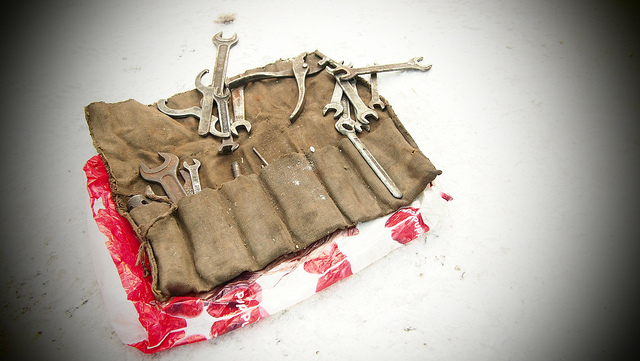
Politicians can be divided into ‘straights’, ‘fixers’ and ‘maddies,’ and Malcolm Turnbull must quickly find his inner fixer.
The transformation isn’t impossible because Turnbull has already tried the other two categories.
In his first stint as Liberal leader, Turnbull performed as a maddy. The party caucus cut him down; he was not the maddy they were looking for.
In the federal election, Turnbull campaigned as a straight. The voters didn’t believe him.
The election result and the nature of the Liberal party room demand that Turnbull discover his fixer abilities. The pressures from voters and party come from different directions but push fixer-wards.
The three categories of politician are from the British Labour MP Tony Benn. In one of those lightning bolts that reveal a vast landscape, Benn got a lot of truth into one sentence: ‘All political leaders, irrespective of party, political system, country or period in history, come in one of three categories—straight men, fixers and maddies.’
The maddies push for change and newness, often blowing up what stands in front of them, and they change history.
The fixers are the apparatchik artists, the doers of deals and buyers of bargains that are the lifeblood of politics from a dictatorship to a democracy.
The straights are loyal to their image of themself and their idea of what politics should be. They tend to be incrementalists whose drives are more firmly grounded than the other two categories, although the frame can be a set of understandings about power as much as moral principles.
To paraphrase Julia Gillard’s farewell press conference on what being a woman had meant for her leadership, the three categories may not explain everything, but nor do they explain nothing.
The maddy-straight-or-fixer model reaches towards the truth Walter Lippmann uttered long ago: the supreme qualification for high office is temperament, not intellect. We know Turnbull’s considerable intellect. The test he faces is about temperament.
The man who has alerted Australia to the Tony Benn definition is that great philosopher of the press and radio, Phillip Adams. Adams explains that the terms aren’t necessarily pejorative, as demonstrated when he defined Paul Keating as a maddy.
In the resulting phone calls from the Lodge, Keating purred. He loved being grouped with his maddy hero, Churchill, even if it meant sharing the same box with Mao and Hitler.
The definitions are useful because they are all about the interaction of personality with power, and have almost nothing to say about formal political labels. Even family ties can’t dislodge the judgement imposed by the three categories. George H W Bush was a classic and successful straight, whereas his son George W Bush was the worst sort of fixer—he broke things.
Some Australian leaders slot neatly into a category, while others don’t sit comfortably under a single heading. There’s hope for Turnbull as he settles to the fixer task.
Front and centre in the straight camp sits John Howard, beside his hero, Robert Menzies. Next to them, though, is the Labor idol John Curtin, plus others from Oz history including Deakin, Bruce, Scullin and Watson. Off to the edge of the straight frame is Malcolm Fraser, who seized office as a maddy but governed all the way through as a straight, then went back to being a maddy in retirement.
The fixers proliferate, as they should—fixing is just another name for politics. Still they’re a disparate crew: Bob Hawke, Julia Gillard, Harold Holt, Billy McMahon and just about every leader of the National/Country Party (although McEwan and Page had their maddy moments).
The maddies range from Paul Keating and Gough Whitlam to John Gorton and Billy Hughes.
Our two previous PMs refuse to go quietly into a category. Labor rages that Kevin Rudd was a maddy. Yet he campaigned and won office as Howard-lite and the voters always insisted he was a straight. The voters prevail. Rudd sits beside Fraser as a straight with a maddy wing.
Tony Abbott campaigned and triumphed as the fixer who’d repair the Labor mess. Abbott did have maddy traits, not least his wonderful ability to reduce complexity to a single-slogan phrase. Still, the voters thought Tony would fix it and gave him a thumping majority. Abbott’s first budget, however, was judged mad by the people. To the amazement of the Liberal Party, Tony kept blowing things up. Shift Tony to the maddy camp.
The close election result means Malcolm Turnbull has little room to channel his maddy aspirations. He may intone about innovation and exciting times, but this isn’t the excitement he craves. The innovation will be in the fixes he can cobbled together, not the big changes he pushes. No more thought balloons, Malcolm.
Plus, the Liberal caucus isn’t disposed to give Malcolm any maddy headroom. Turnbull is the first Liberal leader since Andrew Peacock who’s both socially as well as economically liberal, but today’s Liberal caucus is more in the Howard mould—socially conservative and economically liberal.
Malcolm is in the middle of a muddle, as the ever-sage Paul Kelly reports: ‘His government is shell-shocked. Its post-election resentments could not disguise its confusion. Turnbull won—but his inadequacies have been exposed. His leadership is diminished. His political strategy needs a rethink from top to bottom.’
Another of the doyen class, Michelle Grattan, pronounces: ‘A narrow majority, a divided Liberal Party, and a fractured Senate will make the road to strong policy initiatives a very steep one for Malcolm Turnbull.’
Whatever Turnbull decides to do—big or small—he’ll have to tip-toe before he can climb or jump.
The straight persona Malcolm wore during the campaign won’t do and the maddy traits are hemmed in from all sides. Arise, Malcolm the fixer, your country and party need you.

